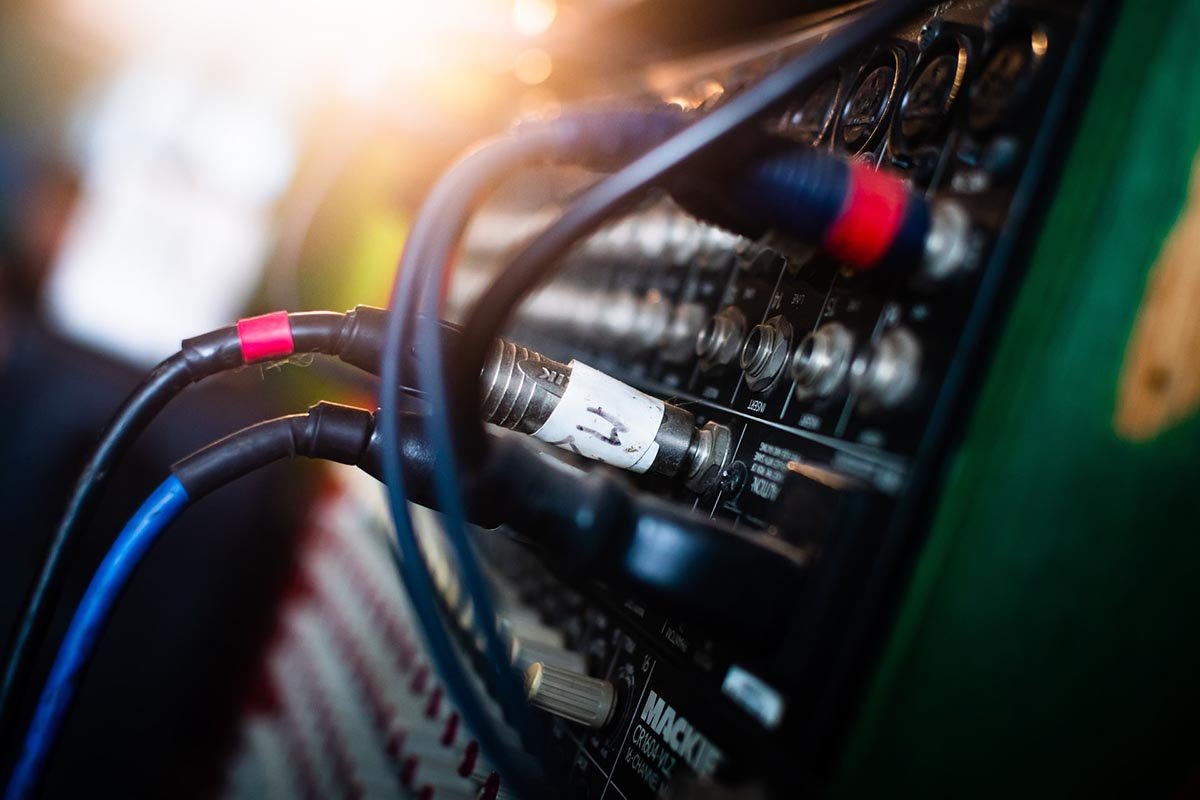To understand speaker amperage, you have to take things like impedance and wattage into account—but how many amps does a speaker use?
On average, a speaker uses somewhere between 1 to 10 amps. Most speakers have a label on the back that tells you how many amps it uses. If the only information available is the wattage and voltage, you can calculate the amps by dividing the watts by volts.
In this article, I’ll explain how to tell the amperage rating of your speakers and what that number means to you.
Page Contents
What Do Amps on a Speaker Mean?

The ampere, or amp for short, is a unit we use to describe how strong the electric current is.
Knowing the amperage of your speaker provides you with a lot of information, including how powerful the speaker is and the speaker’s maximum volume.
Before we go any further, you must understand the amp rating on your speakers.
Manufacturers will write the highest number on the product.
This isn’t necessarily a bad thing, but it can be misleading. If a speaker is rated at 5A, it won’t draw that amount when used at 30% or even max volume.
Your speakers won’t draw more than 1 or 2 amps most of the time.
Nonetheless, amps on a speaker are a good way to tell how loud they can get at max volume.
But if a speaker has twice the amps, that doesn’t mean it’s twice as loud.
You’ll need a lot more amps to double the decibel levels of a speaker.
Also, amps are directly related to your speaker’s power rating. That’s usually the number you see on product descriptions. It’s measured in watts.
You can tell how many amps your speaker uses by dividing the power rating by the voltage. But more on that later.
Do More Amps Mean Better Sound Quality?

More amps on a speaker don’t mean better sound quality. The amps on a speaker only say how much power the speaker can draw.
In other words, more amps mean louder speakers, not better-sounding speakers.
Don’t get tricked by marketing. Manufacturers love to give their speakers excessive amperage or wattage ratings.
Most of the time, their speakers don’t come close to their claims.
In addition, even if the speaker has high amps, it doesn’t equate to better sound—so don’t get caught up on amperage alone.
It’s hard to tell the difference between speakers without actually listening to music on them.
If you’re shopping for speakers online, you’ll have to rely on the reviews and ratings.
Here are some factors that affect speaker sound quality:
- Materials (for the magnet, cone, coil, enclosure, etc.).
- Cone shape.
- Design.
- Build quality.
Again, none of this matters to you, the end-user. If there are tests for the speaker available, look at the frequency response range. The closer it is to the original song, the better.
It’s also good to know if the speaker rattles. A poorly constructed speaker enclosure will make it rattle and vibrate, even if the amp rating is at 1A.
If you’re looking for a high-quality pair of speakers that get plenty loud, I recommend the Micca MB42 from Amazon.com.
This is a pair of passive 2-way bookshelf speakers that users love for their incredible sound, great looks, and affordable price.
What’s the Difference Between Speaker Amps and Watts?
The amp rating on a speaker tells you the current flow, whereas the wattage gives you information about the current.
Essentially, the amps tell you how powerful your speakers are and the watts how much power they draw.
Watts are calculated by multiplying amps by volts.

The two numbers are directly correlated. So, you can estimate how loud a pair of speakers is by looking at either number.
For example, a pair of 3A speakers with an impedance rating of 8 ohms draws about 80 watts of power.
If you’ve ever listened to 80-watt speakers, you’ll probably also remember your neighbors complaining.
So, 3 amp speakers get extremely loud for a home theater.
How Can You Calculate Speaker Amps?
You can calculate speaker amps by dividing the wattage by the voltage.
You can find the information on the label on the back of your speakers.
You can also use the power rating and impedance to calculate amps, but this is more difficult.
Ohm’s law states that electric current equals voltage divided by resistance. Many speakers don’t have the voltage or amp rating on their back label.
That said, they almost always have the power rating and impedance, though.
Otherwise, you’d have no idea what kind of amp you’d need to power the speakers.
Thanks to Ohm’s law, we can calculate the voltage and amps.
I recommend using the Rapid Tables’ Ohm’s law calculator. Type in the resistance and power rating, and press on calculate. The calculator takes care of the rest.
It’ll show you both the speaker amperage and voltage.
Note that you can also use this calculator to measure resistance or power.
Learn more about speaker impedance and how to connect speakers correctly by watching this YouTube video:
How Should You Choose an Amplifier Based on Power Rating?
Now that we’ve discussed amperage, let’s talk a little about amplifiers. Amplifiers increase the power of an electrical signal.
But how should you choose one?
You should choose an amplifier that supports a higher power rating than your speakers.
Also, the impedance must be within the supported range listed on the amp’s spec sheet. If speakers are rated at 100W, they need a 200W amp.
It’s possible to run an amp and speakers with the same power rating.
However, it’s not a good idea to do that. It’ll put an unnecessary strain on your amplifier. This could essentially blow the amplifier.
If you notice sound distortion, no sound at all, or strange sounds such as static or sounds similar to passing gas, then you’ve probably blown your amplifier.
The amplifier has to power your speakers, receive and send signals, process audio, and many other things.
So, it’s good to have some extra headroom for all those demanding tasks.
You could theoretically lower the volume on your speakers to reduce the power usage.
But you didn’t buy 200W speakers to run them at 10W.
You don’t have to spend a lot of money on your amp to get a good power rating.
For example, the Pyle PT694BT from Amazon.com is rated for up to 1000 watts. It is designed for 5.2 surround sound.
This means that you can run two huge subs without any issues. So, it’s a perfect choice for an immersive (and loud) home theater setup.
What’s the Relationship Between Speaker Power and Impedance?

Speaker power is measured in watts, and it describes the amount of current that your speakers draw.
Speaker impedance is how much the speakers resist said current. A lower impedance rating means more power usage.
A speaker rated for 100W uses ten times more power than a speaker rated for 10W.
So, it’s very easy to track how much energy your speaker uses.
But for impedance, lower numbers indicate more power usage. A 4-ohm speaker requires twice as much power as an 8-ohm speaker to work.
You should never hook up an amplifier that doesn’t support your speaker’s impedance rating.
A 4-ohm speaker hooked up to an amp that can’t go lower than 4 ohms will cause problems.
If the speaker constantly requires more power than the amp can deliver, it’ll kill the amp.
The worst thing that can happen is that the amp overheats and dies.
I should probably mention that the impedance rating affects sound quality, but not as much as you think. It’s more important in headphones than in speakers.
Higher-impedance speakers have clearer vocals, a more defined bass, and less distortion.
They’re also more efficient because low-impedance speakers require a lot of power.
That’s why impedance doubles when you add a speaker with the same rating in parallel.
Final Thoughts
Some speakers draw significantly more power than others. Speakers that need more power (measured in watts) also draw more amps.
You can calculate how many amps your speaker uses if you divide the wattage by the voltage.
If you don’t know the voltage, you can figure that too using Ohm’s law.

